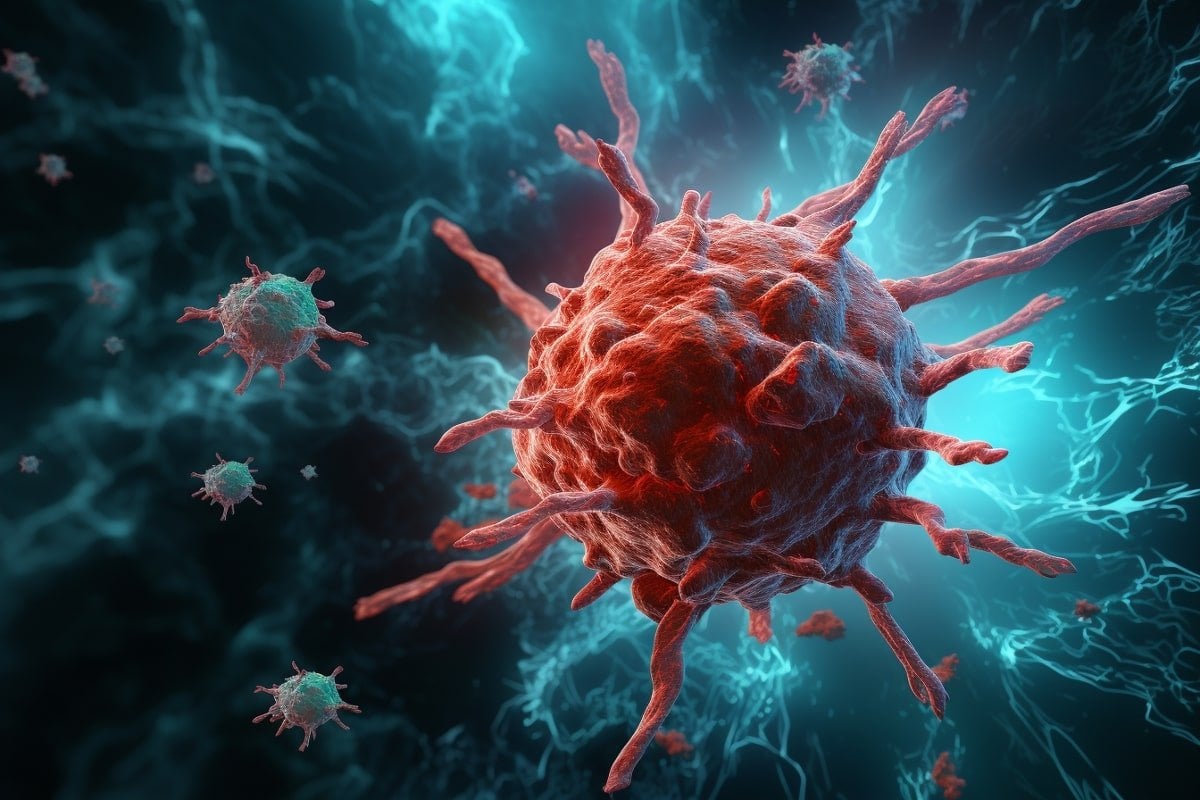Summary: The reactivation of a dormant retrovirus, HML-2, may contribute to the aggressiveness of glioblastoma, a type of brain tumor.
Researchers discovered that the virus influences the stem-cell state of the tumors, thereby promoting a more resistant form of cancer. HML-2 was found to affect stem cell programming via a gene-regulating protein named OCT4.
These findings present potential targets for developing more effective glioblastoma treatments.
Key Facts:
- HML-2 is an ancient retrovirus that has been dormant for 6 million years. It can contribute to brain tumor formation when reactivated.
- The reactivated HML-2 virus alters stem cell programming via a gene-regulating protein named OCT4. This activity makes the glioblastoma more aggressive and resistant to treatment.
- The team’s findings suggest potential targets for new therapies. In their experiments, an anti-retroviral drug notably reduced HML-2 activity and tumor stem-cell markers.
Source: Sylvester Comprehensive Cancer Center
The median length of survival after diagnosis of glioblastoma is 14 months, but some of these brain tumors are more aggressive and resistant to treatment than others, and a new study from Sylvester Comprehensive Cancer Center at the University of Miami Miller School of Medicine suggests reactivation of an ancient retrovirus may be at least partly to blame.
“Our lab found that an evolutionary dormant retrovirus from 6 million years ago – HML-2, a subtype of HERV-K– contributes to brain tumor formation.
“We demonstrated for the first time that this virus, when reactivated, plays a role in defining the stem-cell state of high-grade gliomas, promoting an aggressive form of cancer,” said neurosurgeon Dr. Ashish Shah, principal investigator at Sylvester’s Brain Tumor Initiative (BTI), and first author of a paper in the Journal of Clinical Investigation.
Cancer stem cells, a subpopulation of cells in cancers, drive tumor initiation and development and influence how aggressive and resistant to treatment a cancer will be.
This study, conducted by researchers from Sylvester, Georgetown University and the National Institutes of Health, found that HML-2 altered stem cell programming by activating a gene-regulating protein called OCT4.
HML-2 was previously implicated in the genesis and development of other cancers, but this is believed to be the first study showing the virus’ effects in gliomas and describing the molecular and cellular mechanisms involved.
“Our results suggest that HML-2 fundamentally contributes to the glioblastoma stem-cell niche, the microenvironment that supports stem cells and determines their fate,” said Dr. Avindra Nath, clinical director of the Division of Intramural Research at the National Institute of Neurological Disorders and Stroke at the National Institutes of Health.
“We conducted a comprehensive translational investigation of HML-2 expression in glioblastoma and its role in maintaining the cancer stem cell phenotype,” said Nath, the article’s senior author. Results were based on analyses of patient-derived glioblastoma cells and mouse model studies.
The team’s findings give researchers targets for developing therapies; and in their work, an anti-retroviral drug significantly reduced HML-2 activity and reduced tumor stem-cell markers, said Shah, director of clinical trials and translational research and principal investigator in the Section of Virology and Immunotherapy at Sylvester Comprehensive Cancer Center’s Brain Tumor Initiative (BTI).
“Targeting the glioblastoma stem cell niche is an attractive option to prevent alterations in stem cells and reduce tumor recurrence and treatment resistance,” he said.
HML-2, a subtype of HERV-K, is one of many human endogenous retroviruses (HERVs), ancestral relics of retroviral infections that occurred throughout history and led to the integration of viral sequences into the human genome.
HERVs, making up about 8% of the human genome, are usually silent – unable to cause infection – but scientists have recently discovered that some can be reactivated in certain cancers.
Authors from the University of Miami include first author Shah, Vaidya Govindarajan, Dr. Jay Chandar, Deepa Seetharam, PhD, Jelisah Desgraves, Dr. Michael Ivan, and Dr. Ricardo Komotar. A full list of authors and affiliations is available in the article.
Funding: The work was funded in part by the Intramural Program of the National Institute of Neurological Disorders and Stroke, National Institutes of Health, the Neurosurgery Research and Education Foundation, and the Florida Center for Brain Tumor Research.
Conflicts of interest: The authors have no conflicts of interest to disclose.
About this brain cancer research news
Author: Sandy Van
Source: Sylvester Comprehensive Cancer Center
Contact: Sandy Van – Sylvester Comprehensive Cancer Center
Image: The image is credited to Neuroscience News
Original Research: Open access.
“Human Endogenous Retrovirus-K contributes to a unique stem-cell niche in glioblastoma” by Ashish Shah et al. Journal of Clinical Investigation
Abstract
Human Endogenous Retrovirus-K contributes to a unique stem-cell niche in glioblastoma
Human endogenous retroviruses (HERVs) are ancestral viral relics that constitute nearly 8% of the human genome. Although normally silenced, the most recently integrated provirus HERV-K (HML-2) can be reactivated in certain cancers.
Here, we report pathological expression of HML-2 in malignant gliomas in both cerebrospinal fluid and tumor tissue that was associated with a cancer stem cell phenotype and poor outcomes.
Using single-cell RNA-Seq, we identified glioblastoma cellular populations with elevated HML-2 transcripts in neural progenitor–like cells (NPC-like) that drive cellular plasticity. Using CRISPR interference, we demonstrate that HML-2 critically maintained glioblastoma stemness and tumorigenesis in both glioblastoma neurospheres and intracranial orthotopic murine models.
Additionally, we demonstrate that HML-2 critically regulated embryonic stem cell programs in NPC-derived astroglia and altered their 3D cellular morphology by activating the nuclear transcription factor OCT4, which binds to an HML-2–specific long-terminal repeat (LTR5Hs).
Moreover, we discovered that some glioblastoma cells formed immature retroviral virions, and inhibiting HML-2 expression with antiretroviral drugs reduced reverse transcriptase activity in the extracellular compartment, tumor viability, and pluripotency.
Our results suggest that HML-2 fundamentally contributes to the glioblastoma stem cell niche. Because persistence of glioblastoma stem cells is considered responsible for treatment resistance and recurrence, HML-2 may serve as a unique therapeutic target.








